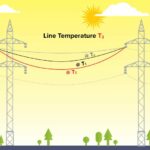Introduction
Per unit fault calculations is a method whereby system impedances and quantities are normalized across different voltage levels to a common base. By removing the impact of varying voltages, the necessary calculations are simplified.
To use the per unit method, we normalize all the system impedances (and admittances) within the network under consideration to a common base. These normalized impedances are known as per unit impedances. Any per unit impedance will have the same value on both the primary and secondary of a transformer and is independent of voltage level.
A network of per unit impedances can then be solved using standard network analysis (see the example). From this fault level can be readily determined.
In applying the per unit method, the first step is to select an arbitrary voltage![]() and power
and power ![]() base.
base.

Having selected a base power and voltage, the base per unit values of impedance, admittance and current can be calculated from:

Dividing a system element by its per-unit base value gives the per-unit value of the element, for example,
![]()
Sometimes per-unit values are available for a given base kV, but the problem being solved is using a different base. In this instance it is possible to convert the unit:
Fault calculation problems typically deal with power sources, generators, transformers and system impedances. Per-unit values for these elements can be quickly derived from:

Where V is in KV
Example – calculating per unit values
Consider a system of source impedance 4.48 Ω connected to a 20 MVA transformer (11/0.4 kV) at 6% impedance. We want to find the fault level at the transformer secondary.
Selecting ![]() as 20 MVA and
as 20 MVA and ![]() as 11 kV and using the above equations
as 11 kV and using the above equations













